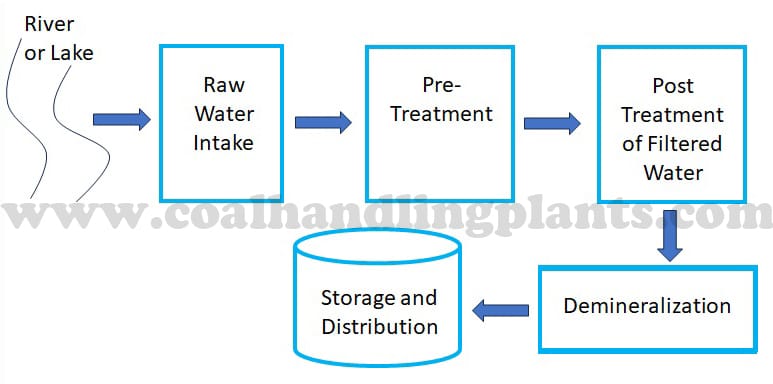Introduction
Water treatment Plant or water treatment system play an important part in purifying water. It’s function is to remove contaminations and making sure the water used in the plant is clean, pure and safe.
Water from natural sources contains contaminations, dirt, and minerals. If left untreated, this water can lead to the following issues.
-
Scaling and Clogging:
The accumulation of minerals and contaminants on equipment surfaces can decrease their efficiency and create blockages that disrupt the water flow.
-
Corrosion:
Contaminants in water can result in equipment rust and deteriorate, leading to damage and expensive repairs.
-
Microorganism Growth:
Untreated water can have bacteria and algae, which can multiply and cause problems within the power plant’s systems.
-
Environmental Impact:
Discharging untreated water back into the environment can harm greenery and creatures, violating environmental regulations.
Water treatment system have specific processes to attend these issues and ensure clean water.
Water Treatment Plant Working

-
Raw Water Intake:
The process in water treatment plant starts by collecting water from external sources like rivers, lakes or water storage facility. To protect the downstream equipment, the water go through preliminary screening and filtration to remove large debris and particles.
-
Pre-Treatment:
The collected water from raw water intake goes through pre-treatment processes to eliminate suspended solids, organic matter, and Contaminants. The main stages of pretreatment are:
-
Aeration
Aeration is a essential process in water treatment plant, improving water quality by introducing air or oxygen and decrease CO2 concentration thereby reduce its corrosiveness.
-
Pre-chlorination
The intention in chlorinating the water is primarily to oxidise organic matter and prevent microbial growths. Chlorination is carried out using gas chlorinator which dissolves chlorine in water.
-
Clarification
Clarification is a fundamental process in water treatment plants that aims to remove suspended solids and particulate matter from water.
This mainly comprises of Coagulation, Flocculation and sedimentation processes and have three distinct features:
(1) High shear, rapid mix for coagulation.
(2) Low shear, high retention time, moderate mixing for flocculation.
(3) Liquid & solids separation for sedimentation.
Coagulation:
The process starts with the addition of coagulants, such as aluminium sulphate (alum) or ferric chloride, to the water. These chemicals neutralize the electric charges on suspended particulates, causing them to come together and form larger, visible clumps called flocs.
Flocculation:
After coagulation, the water is gently stirred or agitated in flocculation tanks or basins. This allows the flocs to collide and aggregate, forming larger, denser particulates that settle more easily during sedimentation.
Sedimentation:
The water is then directed to sedimentation basins or clarifiers, where it is held in large tanks for an extended period. During this time, the flocs settle to the bottom due to gravity, forming a layer of sludge, while the clarified water rises to the top.
The settled solids or sludge, in the bottom of the sedimentation basins are carefully removed using mechanisms like sludge rakes or scrapers. The collected sludge is often further treated and dewatered for disposal or possible reuse.
Filtration
The filtration is the second stage in purification of water in which remnant of contaminations of suspended matters from clarification plant is removed to the extent of 98 – 99%.
In this process water to be treated is introduced into the filter units and passes through the filter media bed. As the water flows through the filter media, fine particles and suspended solids are trapped and retained within the filter bed, allowing only clean water to pass through. Mainly two types of filters are in convention, viz., gravity sand filters & pressure sand filters.
Chlorination
Chlorination is a supplement in water purification processes after clarification & filtration to disinfect water for specific uses including drinking. Chlorine kills pathogenic bacteria by the way of interfering with the specific enzymes in the bacterial cells which are vital to support life
-
POST TREATMENT OF FILTERED WATER
-
Dichlorination
In water treatment sequence, dichlorination is required for public & industrial water supplies for specific purposes, sometimes partly or even fully. No chlorine residuals again are required for using water for demineralization of water purposes either by ion exchange resins, membrane processes, or by electrodialysis reversal, and similarly in food & beverages processing.
-
Softening
In view of the calcium & magnesium ions present in water (causing hardness in water) being concern for scaling, when used in hot water system, viz., cooling cycle, it is imperative to remove these to a certain degree by suitable methods to avoid deposits in a cooling water system. When removed, the water is called soft water and the process is called ‘softening’. This helps prepare water for direct use as in cooling cycle/cooling tower make-up or as a first stage treatment followed by ion exchange (demineralization process) for boiler make-up or process use.
-
Demineralization:
After dichlorination, the next stage of treatment is demineralization by Ion Exchange process, by a suitable DM plant. The DM plant play a critical role for removing mineral salts from the water used in power generation processes. Conventionally it consists of:
- Strong acid cation exchanger (SAC)
- Degasser (DG)
- Strong base anion exchanger (SBA)
- Mixed bed (MB) polisher
- Ultrafiltration (UF) unit.
-
Storage and Distribution:
Once the water treatment process is complete in water treatment system, the clean and purified water is stored in tanks within the plant. It is then distributed to various parts of the plant.
RELATED SEARCHES: